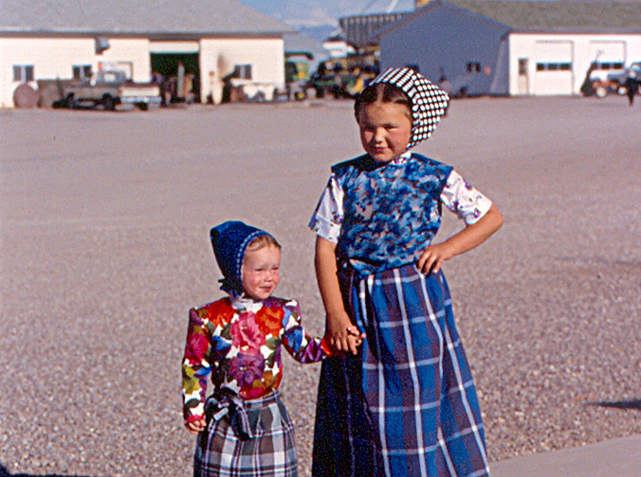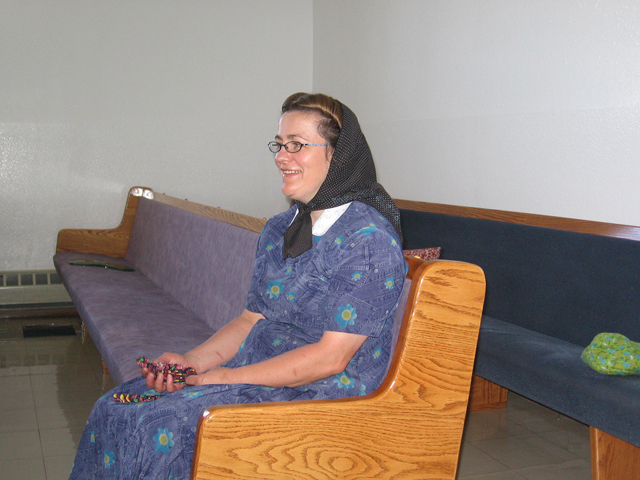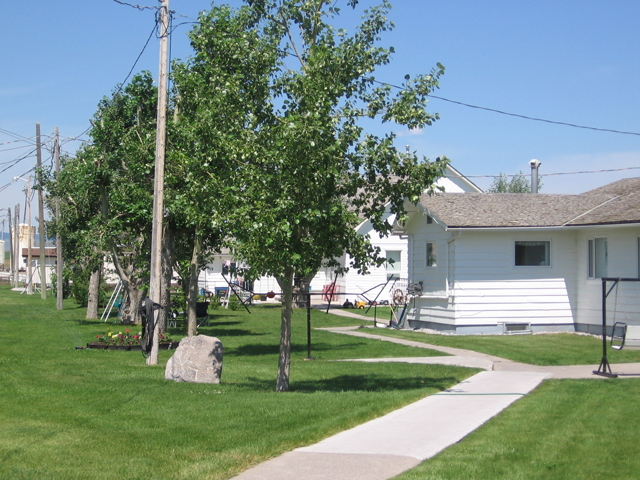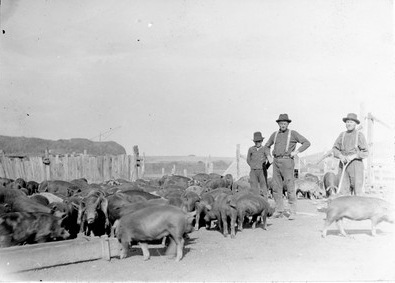A newly-formed Hutterite colony in southern Alberta has been seeking approval of its plans to construct buildings and begin farming on lands it has purchased, but local residents are strongly opposed. Plans by the Clear Lake Colony, just north of Lethbridge, to develop its new branch colony, Summerland, and the opposition by some residents in the nearby village of Carmangay, have been publicized by the Vulcan Advocate, the newspaper serving Vulcan County where the colony is located. The contentious issue appears to be headed to court.

A summary of the situation does not completely explain the motivations of the ferocious opposition to the new colony. The Clear Lake Colony began buying land in order to branch off the new colony about six years ago. Colonies that have grown too large and then split in two have been a familiar occurrence on the Canadian prairies, and the northern plains states of the U.S., for the past century. Usually it is accepted as routine, though opposition occurs at times. The story about the disputed colony was first published online in the Vulcan Advocate in October 2014 with repeated reports after that as developments have occurred.
On October 3rd that year the paper reported that the Municipal Planning Commission (MPC) for the county had rejected a plan submitted by Summerland to build their new colony about 3.5 miles southwest of Carmangay, a village of about 270 people in southern Alberta just north of Lethbridge.
An appeal of that decision by the colony to the Vulcan County Regional Subdivision and Development Appeal Board (SDAB) had also been rejected. Reasons for the rejections included, as the MPC had decided that August, “the intensity and density of the development, including the resulting traffic and other nuisance implications, is deemed to be incompatible with existing adjacent land uses.” In supporting the MPC, the Board indicated that the Hutterites had not included sufficient information about their plans for the new colony.

The following May, the paper reported, the MPC once again turned down another application by the Summerland Colony for a permit to build on its land by a vote of 6 to 0. With about 40 people attending the hearing, 10 spoke up in opposition, telling the commissioners that the proposed colony, which would consist of about half of Clear Lake or around 75 people, was too close to the established village of Carmangay. The opponents expressed several concerns, such as decreasing property values, odors from livestock operations, and noise from the colony.
Despite all of that opposition, the newspaper wrote on July 21, 2016, that the MPC had changed its mind and approved still another application by Summerland. It is hard to tell from the newspaper story what details the colony had changed in its renewed application, but the report indicated that the colony will include four multi-unit residences, a school, a church, kitchen facilities, service buildings, and the necessary water and sanitary facilities. The colony plans to farm the land. What could be more routine in southern Alberta? The commission had received 22 letters opposed to the proposed development and 15 letters in favor of it. The MPC voted 5 to 1 in favor of the application.

The chair of the MPC, Derrick Annable, stated that conditions applicable to the site of the new colony are quite comparable to other colonies in the province in terms of numbers of other residences, their closeness to the proposed colony, and such. Mr. Annable added that the proposed colony is “compatible with the surrounding rural general area.” The proposed sewage lagoon would meet provincial setback requirements.
Opponents quickly appealed to the SDAB, their opposition based on the possibility that the colony might develop a confined animal feeding operation (CAFO), which would generate the well-known, and intense, smells that normally pollute the air from such operations. The appeals board scheduled a meeting for August 29, 2016. About 100 people appeared for the hearing in the county council chambers. But the hearing was recessed because one of the members had been challenged, leaving the board without its legally-required quorum. September 19 was set as the next date for a hearing.

At its next meeting, the SDAB accepted the popular will and reversed the MPC decision, rejecting the application of the Summerland Hutterites. Numerous people expressed concerns that the prevailing winds are from the southwest, which would carry the odors from the colony the 3.5 miles northeast over Carmangay. The board agreed with the protesters, stating that life in Carmangay would be most unpleasant with odors from a confined animal feeding operation only 3.5 miles upwind. The board also agreed with the opponents that having the 32 dwelling units constructed as apartment buildings would be “uncharacteristic of farmsteads of this size and may be better suited in an urban setting,” even though such apartments would appear to a visitor as standard accommodations in Alberta Hutterite colonies.
Not surprisingly, Summerland decided to appeal the board’s decision to the Alberta courts. The Vulcan Advocate reported in November 2016 that the county was going to have to triple its budget for legal fees for the coming year to meet the challenge, from $7,500 to $22,500. In January 2017, Justice Jo’Anne Strekaf of the Alberta Court of Appeal ruled that the Hutterites of Summerland had the right to contest the decision of the board denying their application, based on their contention that the SDAB had erred in law by considering the potential impacts of a possible future proposal—the development of a confined animal feeding operation, a permit for which had not yet been requested.
Last week a local television station, CTV News out of Lethbridge, covered the story briefly, with the news anchor leading off by stating that Alberta’s highest court had agreed to hear the Summerland colony’s appeal. The news clip does not give its date, though the link from Google indicated the story was produced on Monday, May 1.

Much of the TV report covered the history of the controversy, but it added the faces and testimonies of some of the participants. One was Kym Nichols, the Mayor of Carmangay. Ms. Nichols, filmed leaning against a pickup truck, said baldly, “the majority of residents [of Carmangay] are strongly opposed [to the new colony].” She told the reporter that opposition in the village is based on the potential for a future confined animal feeding operation, as well as on the probability of increased traffic on the roads and on the likelihood that the new colony will be spreading manure on the fields just three and a half miles upwind of town. The viewer from outside the area has to wonder if most Alberta farmers don’t spread manure from their animals on their fields. In any case, no other opponents in Carmangay were willing to make comments on camera.
But Mayor Nichols wanted to assure the southern Alberta TV audience that her community had nothing against the Hutterites themselves. She said that the village has good relationships with colonies in the area and the fire department is primarily composed of Hutterites, “and so it has nothing to do with that.” She was saying, in essence, that opposition is not related to prejudice against the Hutterites. It’s just the possibilities of new agricultural operations that concern the people, the mayor emphasized. The courts will have to decide.